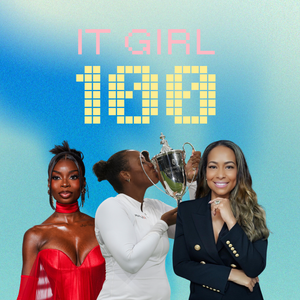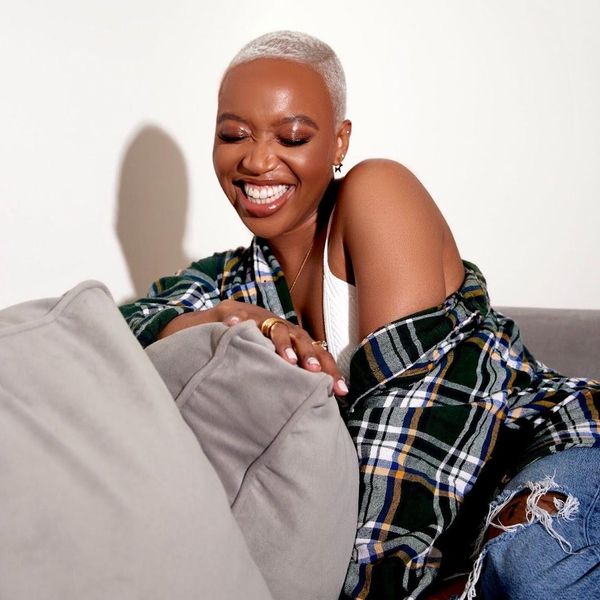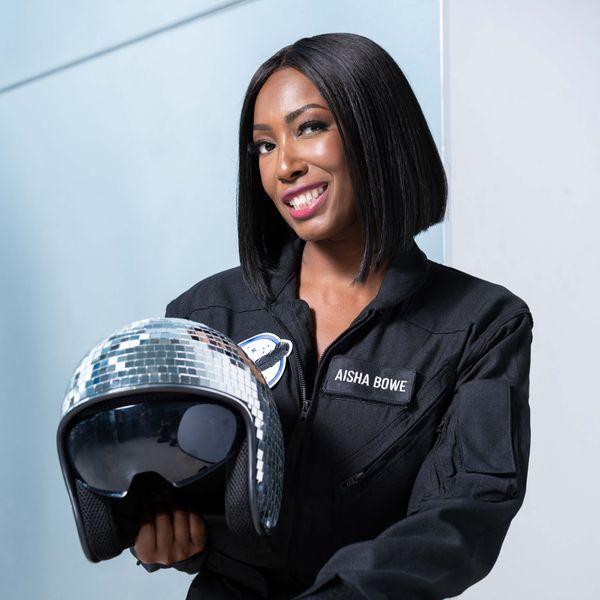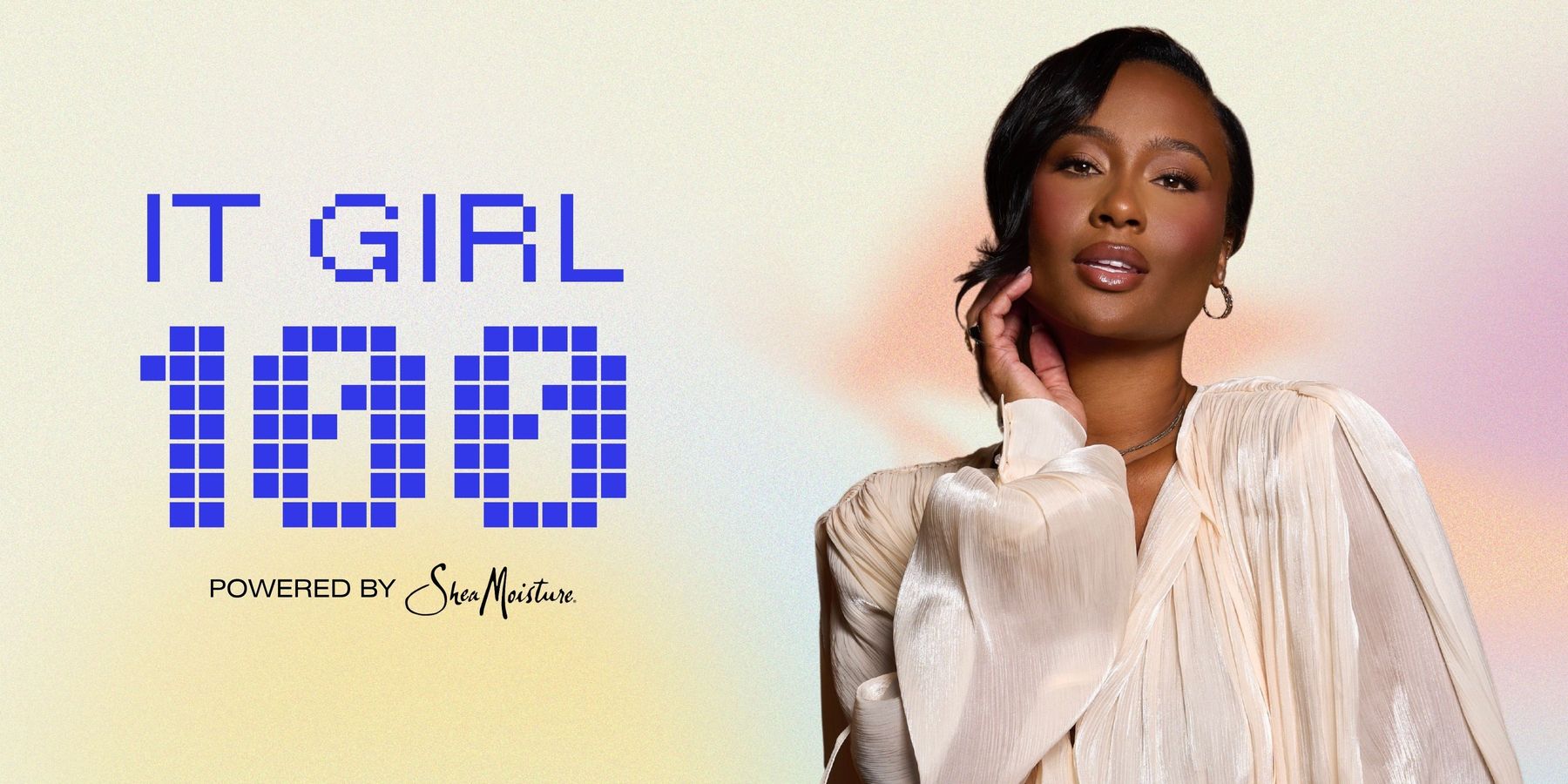Girl+Hair Founder Dr. Camille Verovic On The Science Behind Her Revolutionary Haircare Line

The first time I met Dr. Camille Verovic was at a natural hair event held at a Target in Atlanta. She was showcasing her haircare line, Girl+Hair, and celebrating her newly secured spot with the retailer.
Among her were a few beautiful black queens with a variety of different hairstyles: wigs, braids, afros, you name it. They were all in the aisle talking to other women about their hair concerns, textures, and the benefits of the Girl+Hair products. I ear-hustled a bit and overheard one of the girls mention that Dr. Camille was becoming a dermatologist and that she uses her studies to create the right formula for women of color.
Interestingly enough, Dr. Camille's career did not start in medicine. Instead, one passion opened the door to another.
She began her career as a marketing professional for an advertising agency which gave her all the tools, resources, and knowledge to build a brand. During her time working at the advertising agency, she also embarked on another journey: her hair. At that time, she chemically treated her hair with relaxers to the point where her real hair started to break off. As a remedy for her unhealthy hair, Dr. Camille decided to go natural and big chop. While on the mission to grow strong and healthy hair, she ran into another problem — she didn't have the right products. After struggling to find the right products, she decided to just solve the problem herself and Girl+Hair was the solution. Shortly after, Dr. Camille discovered a passion for dermatology to further help and create safe spaces for black women to express their hair concerns far beyond Girl+Hair.
Take a look into how Girl+Hair founder Dr. Camille Verovic breaks down the key to healthy haircare:
What inspired you to start Girl+Hair?
When I had a sew-in, I became concerned because I couldn't find products on the shelf to help me take care of my new growth while it was in a sew-in; and I have this protective style to retain length but I couldn't find products to maintain my hair while it was in that style. I was nervous that it would get dry, brittle, and go back to where I started. I couldn't find shampoos because they were too thick [and] the utility was all wrong. I would buy shampoo and mix it with water to get into the base of my braids and try to dilute my conditioner but it would always feel like I didn't know what I was getting and all the conditioners I liked didn't use the best ingredients. All of those things, out of frustration, created the concept of Girl+Hair.
"I would buy shampoo and mix it with water to get into the base of my braids and try to dilute my conditioner but it would always feel like I didn't know what I was getting and all the conditioners I liked didn't use the best ingredients. All of those things, out of frustration, created the concept of Girl+Hair."
What sets Girl+Hair apart from other products that claim to support hair growth with protective styling?
I think for our products, we think of different prongs. For each product, we think about how it's being used. For instance, not all products are [low porosity] or runny. We always make the shampoos low viscosity on purpose because if you have a braided style, you want the product to get to where it needs to go quickly and properly and you want it to perform well. Then there's the leave-in conditioner; we left out a regular conditioner on purpose because we wanted to make the steps a little easier. Then there's a daily restore product. It's a castor oil-based product and it's not a low porosity product because you want a protective oil. So, if you have a sew-in, you want the oil to stay at the base of the place. You don't want it running all over your sew-in. If you have braids, you want it to stay on your scalp to coat the shaft of your hair.
The second thing is, and I think this is where my expertise comes in, is the selection of ingredients. We just don't select ingredients just to do it. When I think of ingredients in my products, I actually go through a scientific database and look at studies to see why would I use these ingredients. When you think about Girl+Hair, I want people to know that there is a person behind the brand who actually tries to find scientific backing as to why we selected these things.
Do you think there’s a pressure within the hair industry as far as what ingredients to use?
I do feel that there's pressure. I'm not sure if it's the consumer driving it or the companies. I'm not sure if consumers express their interest on social media. I'm not sure if companies look at consumers as thought leaders and create products for what they're doing already or if everyone is following suit. I'm not quite sure. But you do feel pressure because once that key ingredient becomes a thing, as a brand, you'll do something with that ingredient too.
How do you stay away from that and avoid following suit?
I stay true to science. At the end of the day, I love what I do and I feel privileged to do what I do and there's an ethical code that comes with being a physician that I can't shake and I don't want to. I have to stand by my products as a physician.

Dr. Camille Verovic
"I stay true to science. I have to stand by my products as a physician."
How long did it take you to come up with the entire line?
Maybe two strong years, a lot of it was branding. I kind of knew my ingredients for the products but I understand the importance of branding from my years in marketing. I understood that branding is important. You want brand equity, so you have to put in the work when it comes to that. I also spent a lot of time identifying my customer. What does she want? Who is she? If Girl+Hair was a girl, would my customer be her friend? How likely would they hang out together? Then once I had that, I focused on formulations and finding the right one, having the base foundation products, and finding the money.
What inspired you to become a dermatologist?
I'm in my second year of dermatology training and I complete that next June and I take my board exam in July. One of the biggest things that I love about dermatology is it's a visual field, so you can look at something and, based on the visual acuity, diagnose conditions. I think that's amazing! Most things in the body need some sort of imaging or something to give a diagnosis. With dermatology, you literally use your eyes and sometimes your touch to help you figure out what's wrong. The second thing and why I feel so privileged to be in this field is that there aren't many black dermatologists. It's so crazy and so sad! It's a joy you feel when the patient sees you and they feel like you understand them and their skin a little bit better.
When it comes to hair loss with women of color, what do you think are some common causes from your experience and expertise?
In our community, it's an epidemic honestly. But I do think that consumers and patients are more intelligent as a people, so we have access to social media, access to information that helps us navigate that world of not having really tight braids or weaves. Most of us know that that's not right, it's painful, it's wrong, and it's causing damage. What I see too is CCCA. That's actually an inflammatory process going on in the scalp that no stylist can help you with per se, and you need to see a doctor about that. There's also something called LPP. There are different medical conditions that can cause hair loss, but I feel like when I see black women throughout the week, usually it's going to be traction alopecia.
Do you have any other suggestions on other ways to combat hair loss? Would you recommend men/women to see a dermatologist a certain amount of times a year?
I'm always into healthy styling practices and I'm not against protective styles as long as it is protective and not a damaging style; because some people will say it's protective but it's actually damaging. I'm also into:
- Frequent hair cleansing. I think that's another thing people don't do. They don't wash their hair often enough — at least once a week.
- Conditioning your hair properly.
- If you feel something, say something. If you feel something on your scalp, pain, burning, or tenderness in one spot, you should say something. You should say something to your hairstylist or dermatologist. But when you feel something on your scalp, you should definitely see someone about it because that could be the initial sign of something more serious going on.

Girl+Hair
Do you think there should be a different hair routine from wearing your hair and a protective style?
No. I think the same amount of care and concern that you give to your hair and scalp while you have your hair out should be the same concern and effort when it's tucked away. I think the biggest misconception is because it's protected, I don't have to think about it, and that's not true at all. You should be just as aware. You still have to moisturize. Take care of it just the same.
Is there anything else you’d like to mention that you’d like people to know?
I think one of the biggest things when it comes to our brand is education. Our brand is about smart haircare. It's smart because you have a founder who can sit at a table with companies and speak on behalf of black women but who's also a physician, and you have that backing the brand. I think with protective styles, it's just [about] educating ourselves as black women about the importance of taking care of ourselves. With Girl+Hair, it's that underlying current of self-care and self-care every single day, even when you don't want to. Also, I want to mention something called Skin of Color Society. People can go and find a derm doc in your area.
Follow Dr. Camille and Girl+Hair, follow them on social media at @girlandhair or www.girlandhair.com.
Originally published on August 12, 2019
- These Target Takeoff Program Grads Are Paving the Way for Natural ... ›
- GIRL+HAIR | LinkedIn ›
- Dr. Camille H-Verovic: Founder of Girl + Hair - Urban Beauty Blog ›
- Camille H-Verovic - Dermatology Resident - St. John's Episcopal ... ›
- Fly Female Entrepreneur: GIRL + HAIR's Dr. Camille Howard-Verovic ›
- Dr. Camille Verovic Talks Creating Her Own Space In The Natural ... ›
- Camille Verovic, Founder of Girl & Hair Under ... - Sheen Magazine ›
- PRESS + REVIEWS – Tagged "Dr. Camille Verovic" – GIRL+HAIR ... ›
Exclusive: Viral It Girl Kayla Nicole Is Reclaiming The Mic—And The Narrative
It’s nice to have a podcast when you’re constantly trending online. One week after setting timelines ablaze on Halloween, Kayla Nicole released an episode of her Dear Media pop culture podcast, The Pre-Game, where she took listeners behind the scenes of her viral costume.
The 34-year-old had been torn between dressing up as Beyoncé or Toni Braxton, she says in the episode. She couldn’t decide which version of Bey she’d be, though. Two days before the holiday, she locked in her choice, filming a short recreation of Braxton’s “He Wasn’t Man Enough for Me” music video that has since garnered nearly 6.5M views on TikTok.
Kayla Nicole says she wore a dress that was once worn by Braxton herself for the Halloween costume. “It’s not a secret Toni is more on the petite side. I’m obsessed with all 5’2” of her,” she tells xoNecole via email. “But I’m 5’10'' and not missing any meals, honey, so to my surprise, when I got the dress and it actually fit, I knew it was destiny.”
The episode was the perfect way for the multihyphenate to take control of her own narrative. By addressing the viral moment on her own platform, she was able to stir the conversation and keep the focus on her adoration for Braxton, an artist she says she grew up listening to and who still makes her most-played playlist every year. Elsewhere, she likely would’ve received questions about whether or not the costume was a subliminal aimed at her ex-boyfriend and his pop star fiancée. “I think that people will try to project their own narratives, right?” she said, hinting at this in the episode. “But, for me personally – I think it’s very important to say this in this moment – I’m not in the business of tearing other women down. I’m in the business of celebrating them.”
Kayla Nicole is among xoNecole’s It Girl 100 Class of 2025, powered by SheaMoisture, recognized in the Viral Voices category for her work in media and the trends she sets on our timelines, all while prioritizing her own mental and physical health. As she puts it: “Yes, I’m curating conversations on my podcast The Pre-Game, and cultivating community with my wellness brand Tribe Therepē.”
Despite being the frequent topic of conversation online, Kayla Nicole says she’s learning to take advantage of her growing social media platform without becoming consumed by it. “I refuse to let the internet consume me. It’s supposed to be a resource and tool for connection, so if it becomes anything beyond that I will log out,” she says.
On The Pre-Game, which launched earlier this year, she has positioned herself as listeners “homegirl.” “There’s definitely a delicate dance between being genuine and oversharing, and I’ve had to learn that the hard way. Now I share from a place of reflection, not reaction,” she says. “If it can help someone feel seen or less alone, I’ll talk about it within reason. But I’ve certainly learned to protect parts of my life that I cherish most. I share what serves connection but doesn’t cost me peace.
"I refuse to let the internet consume me. It’s supposed to be a resource and tool for connection, so if it becomes anything beyond that I will log out."
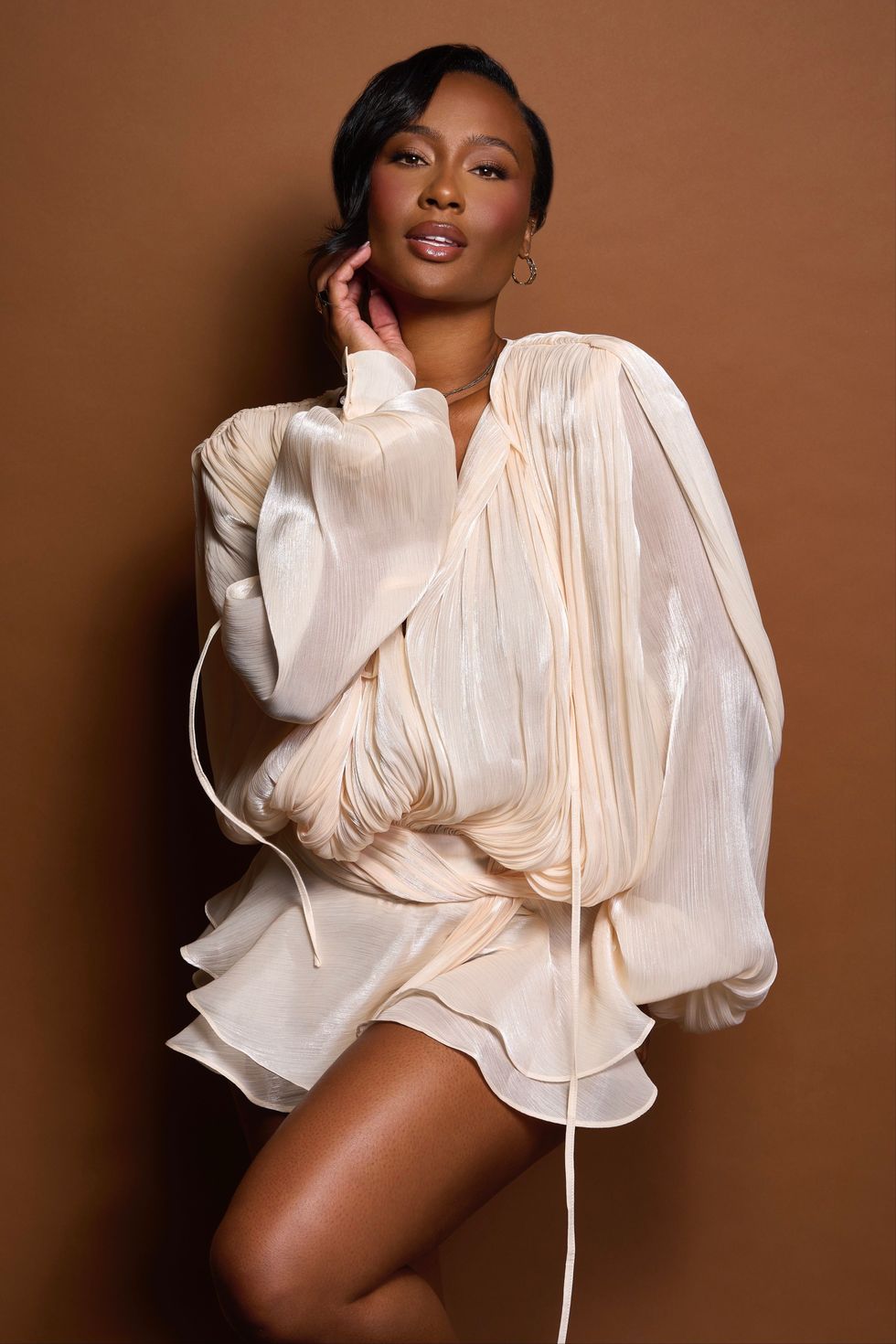
Credit: Malcolm Roberson
Throughout each episode, she sips a cocktail and addresses trending topics (even when they involve herself). It’s a platform the Pepperdine University alumnus has been preparing to have since she graduated with a degree in broadcast journalism, with a concentration in political science.
“I just knew I was going to end up on a local news network at the head anchor table, breaking high speed chases, and tossing it to the weather girl,” she says. Instead, she ended up working as an assistant at TMZ before covering sports as a freelance reporter. (She’s said she didn’t work for ESPN, despite previous reports saying otherwise.) The Pre-Game combines her love for pop culture and sports in a way that once felt inaccessible to her in traditional media.
She’s not just a podcaster, though. When she’s not behind the mic, taking acting classes or making her New York Fashion Week debut, Kayla Nicole is also busy elevating her wellness brand Tribe Therepē, where she shares her workouts and the workout equipment that helps her look chic while staying fit. She says the brand will add apparel to its line up in early 2026.
“Tribe Therepē has evolved into exactly what I have always envisioned. A community of women who care about being fit not just for the aesthetic, but for their mental and emotional well-being too. It’s grounded. It’s feminine. It’s strong,” she says. “And honestly, it's a reflection of where I am in my life right now. I feel so damn good - mentally, emotionally, and physically. And I am grateful to be in a space where I can pour that love and light back into the community that continues to pour into me.”
Tap into the full It Girl 100 Class of 2025 and meet all the women changing game this year and beyond. See the full list here.
Featured image by Malcolm Roberson
If there is one thing that I am going to do, it’s buy myself some scented soy candles. And, as I was looking at a display of them in a TJ Maxx store a couple of weekends ago, I found myself wondering just who decided which scents were considered to be “holiday” ones. The origin stories are actually pretty layered, so, for now, I’ll just share a few of ‘em.
I’m sure it’s pretty obvious that pine comes from the smell of fresh Christmas trees; however, scents like cloves, oranges, and cinnamon are attributed to two things: being natural ways to get well during the cold and flu season, and also being flavors that are used in many traditional holiday meals.
Meanwhile, frankincense and myrrh originate from the Middle East and Africa (you know, like the Bible does — some folks need to be reminded of that—eh hem — Trumpers) and ginger? It too helps with indigestion (which can definitely creep up at Thanksgiving and Christmas dinner tables); plus, it’s a key ingredient for ginger snaps and gingerbread houses. So, as you can see, holiday-themed scents have a rhyme and reason to them.
Tying this all in together — several years ago, I penned an article for the platform entitled, “Are You Ready To Have Some Very Merry ‘Christmas Sex’?” Well, in the spirit of revisiting some of that content, with a bit of a twist, I decided to broach some traditional holiday scents from the perspective of which ones will do your libido a ton of good from now through New Year’s Eve (check out “Make This Your Best NYE. For Sex. EVER.”).
Are you ready to check some of them out, so that, whether it’s via a candle, a diffuser, some essential oil, or some DIY body cream (check out “How To Incorporate All Five Senses To Have The Best Sex Ever”), you can bring some extra festive ambiance into your own boudoir? Excellent.
1. Vanilla
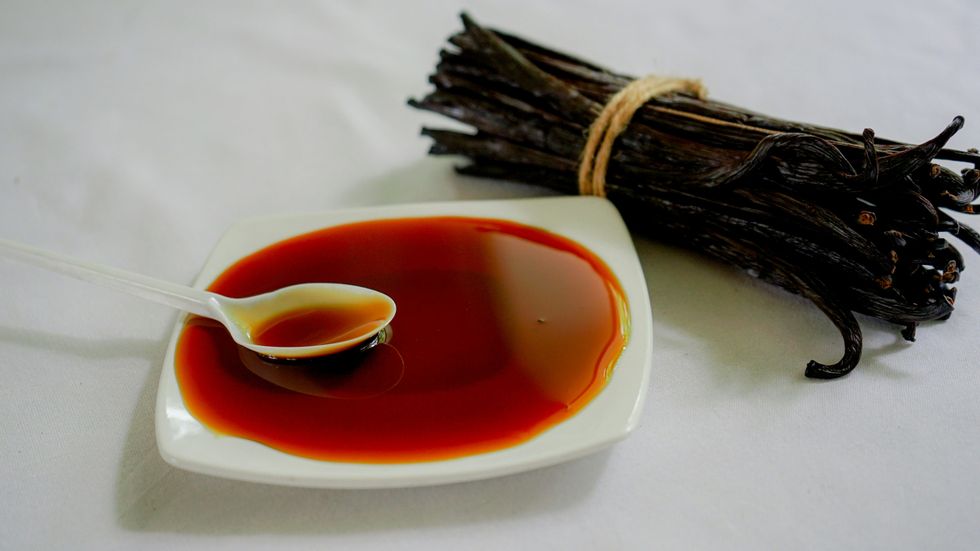
Unsplash
When it comes to holiday desserts, you’re going to be hard-pressed to find recipes that don’t include vanilla — and that alone explains why it is considered to be a traditional holiday scent. As far as your libido goes, vanilla is absolutely considered to be an aphrodisiac — partly because its sweet scent is considered to be very sensual. Some studies even reveal that vanillin (the active ingredient in vanilla) is able to increase sexual arousal and improve erectile dysfunction in men. So, if you adore the smell, here is more incentive to use it.
2. Frankincense

Unsplash
Although, typically, when people think about frankincense (and myrrh), it’s in the context of the gifts that the wise men brought Christ after he was born; it’s a part of the biblical Christmas story. However, frankincense goes much deeper than that. Sexually, since it has an earthy and spicy scent, some people like to use it to meditate (check out “What Exactly Is 'Orgasmic Meditation'?”). Also, since it has the ability to put you in a better mood, soothe and soften your skin and maintain your oral health — with the help of frankincense, every touch and kiss can be that much…sexier.
3. Cinnamon

Unsplash
I already gave cinnamon a shout-out in the intro. Personally, I’ve been a fan of it, in the sex department, for a long time now (check out “12 ‘Sex Condiments’ That Can Make Coitus Even More...Delicious”). When it’s in oil form, it can be very sweet to the taste while sending a warm sensation throughout the body — which is why the giver and receiver of oral sex can benefit from its usage. Beyond that, cinnamon helps to increase blood flow to your genital region, elevate sexual desire and, some studies say that it can even help improve fertility. Beautiful.
4. Peppermint
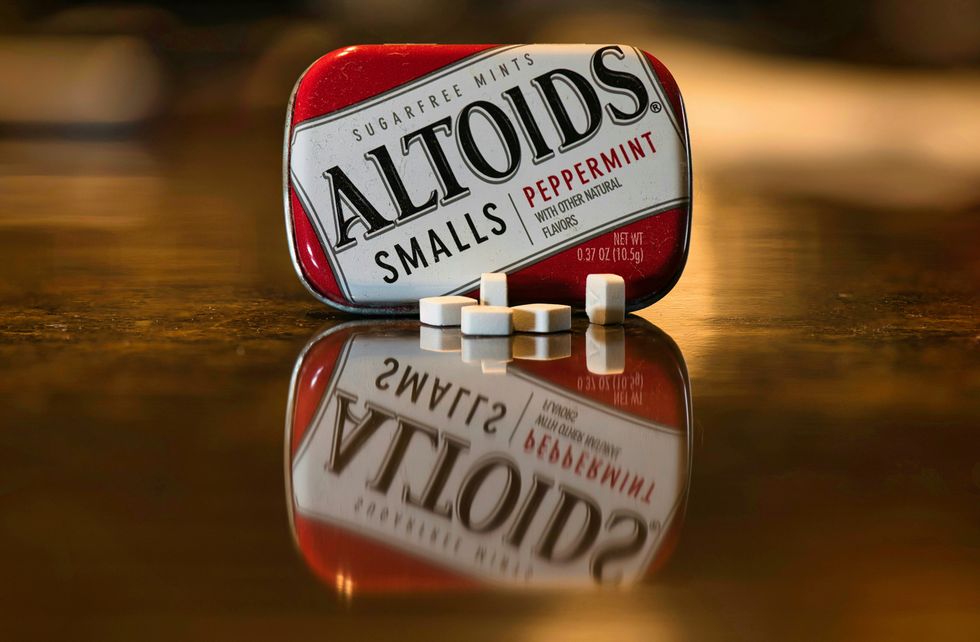
Unsplash
If there’s a signature candy for the holiday season, it’s probably a candy cane — which automatically puts peppermint in the running for being an official holiday scent. Pretty much, in any form, it’s got your sex life’s back because it’s hailed as being a sexual stimulant; in part, because its smell is so invigorating. Plus, it helps to (eh hem) ease headaches, it gives you more energy and it can definitely help to freshen your breath. Also, that minty sensation? The same thing that I said about cinnamon can apply to peppermint too (if you catch my drift).
5. Ginger
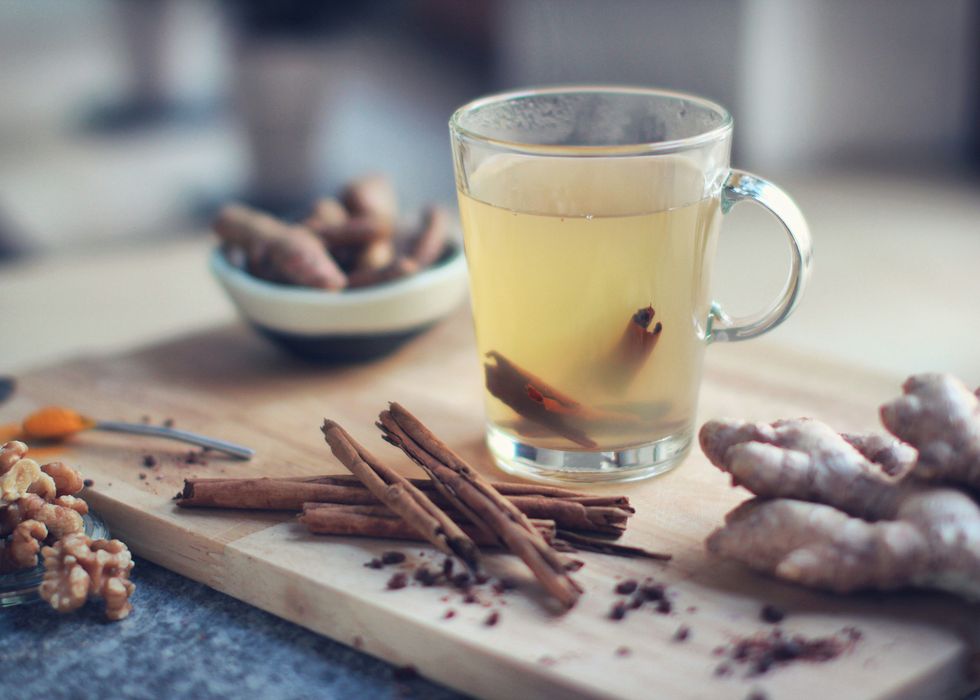
Unsplash
Whether it’s in a meal or in your bedroom, ginger is going to produce results that are hella spicy. On the sex tip, science has praised ginger for being able to increase sexual arousal, improve blood circulation (which intensifies orgasms) and strengthen fertility for many years. Scent-wise, I find it to be one that both men and women enjoy because it is both woodsy and sweet. So, if you’ve got some massage oil in mind, adding some ginger is a way to please you both.
6. Pomegranate
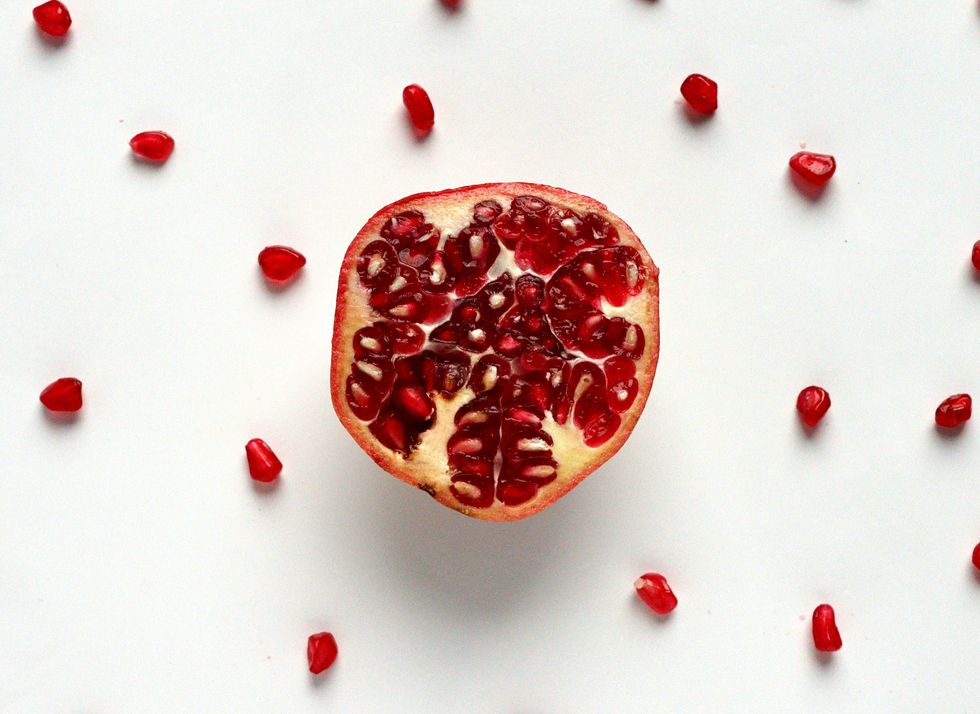
Unsplash
September through December is the time of year when pomegranates are considered to be in season. And, as someone who is a Rosh Hashanah observer, I have a personal adoration for them because I am aware of the various things that they symbolize in Hebrew culture including the fact that they are a fruit that represents love and fertility. So yeah, they would absolutely be an aphrodisiac — one that is perfect for this time of the year. While consuming it helps to boost testosterone levels in both men and women, the floral bittersweet smell that it produces can help to reduce stress while promoting relaxation (like most floral scents do) — and the more relaxed you are, the easier it is to climax.
7. Nutmeg

Unsplash
Another signature seasoning during the holiday season is nutmeg. It’s perfect in Thanksgiving sweet potato (or pumpkin) pie and Christmas morning French toast. And yes, it can also make your sex life better. If you consume it, it can intensify your libido and, overall, its warm-meets-spicy-meets-sweet smell is so inviting that it is considered to be a pretty seductive scent.
8. Cloves
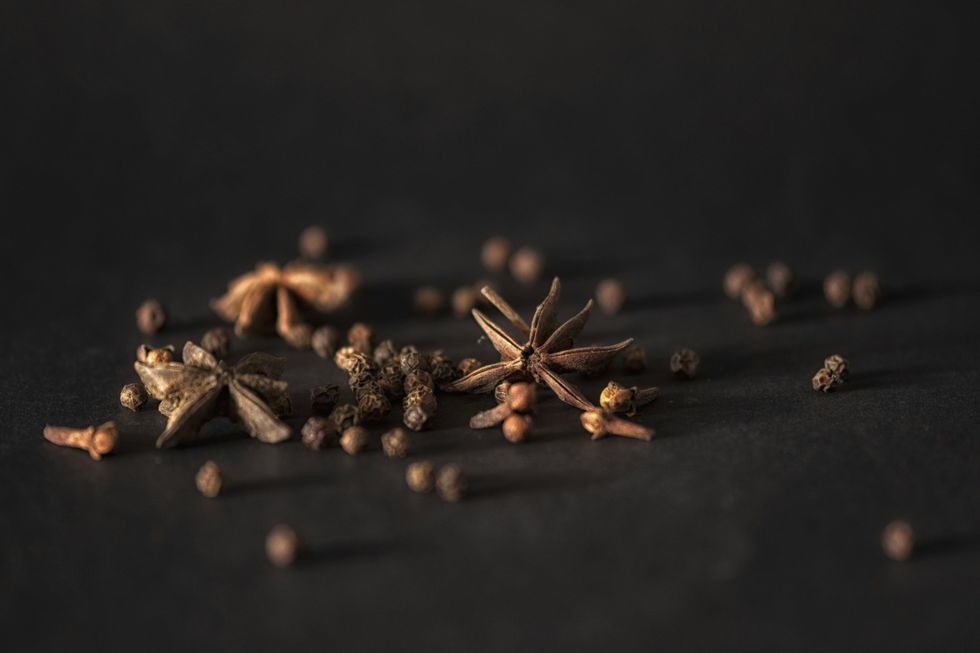
Unsplash
I ain’t got not one lie to tell you — if you’ve got a toothache, put some clove oil on that bad boy and send me a Christmas present for putting you on game. Aside from that, as I round all of this out, cloves are another holiday scent that can do wonders for your sex life. For men, it has the ability to significantly increase sexual arousal and improve stamina and endurance. For men and women alike, it also has a reputation for strengthening sexual desire. And for women solely? Well, if you want an all-natural way to increase natural lubrication down below — the scent and and feel (in DILUTED oil form) can make that happen. It can make the holidays especially special…if you know what I mean.
Ah yes — the atmosphere of the holidays and what it can do.
Take it all in! Scent ‘n whatever stimulating that comes with it! #wink
Let’s make things inbox official! Sign up for the xoNecole newsletter for love, wellness, career, and exclusive content delivered straight to your inbox.
Featured image by Giphy


